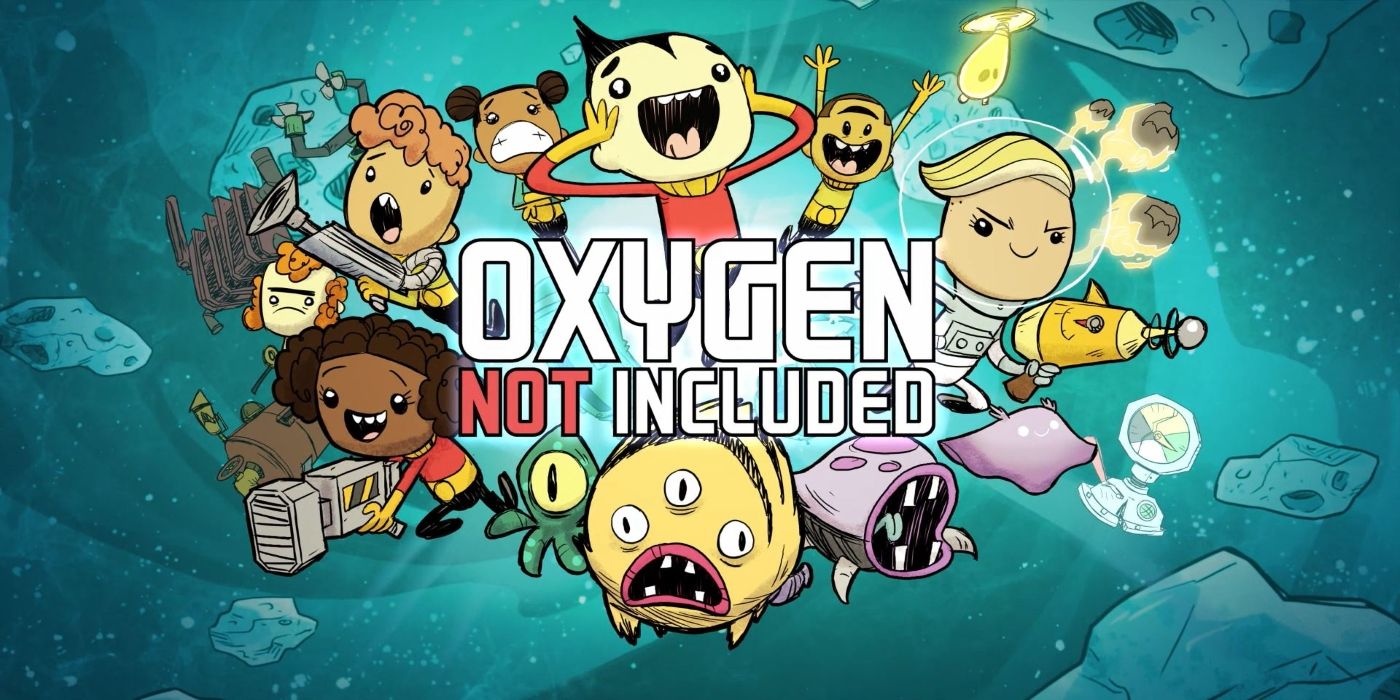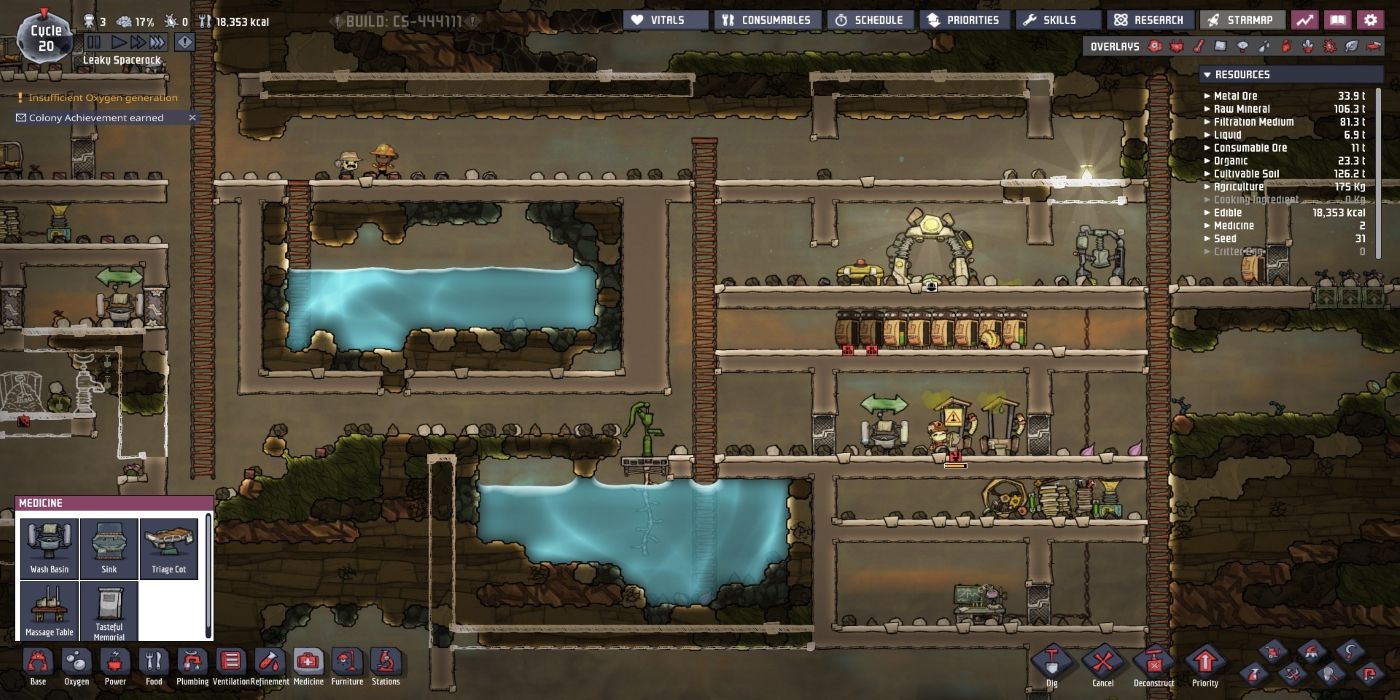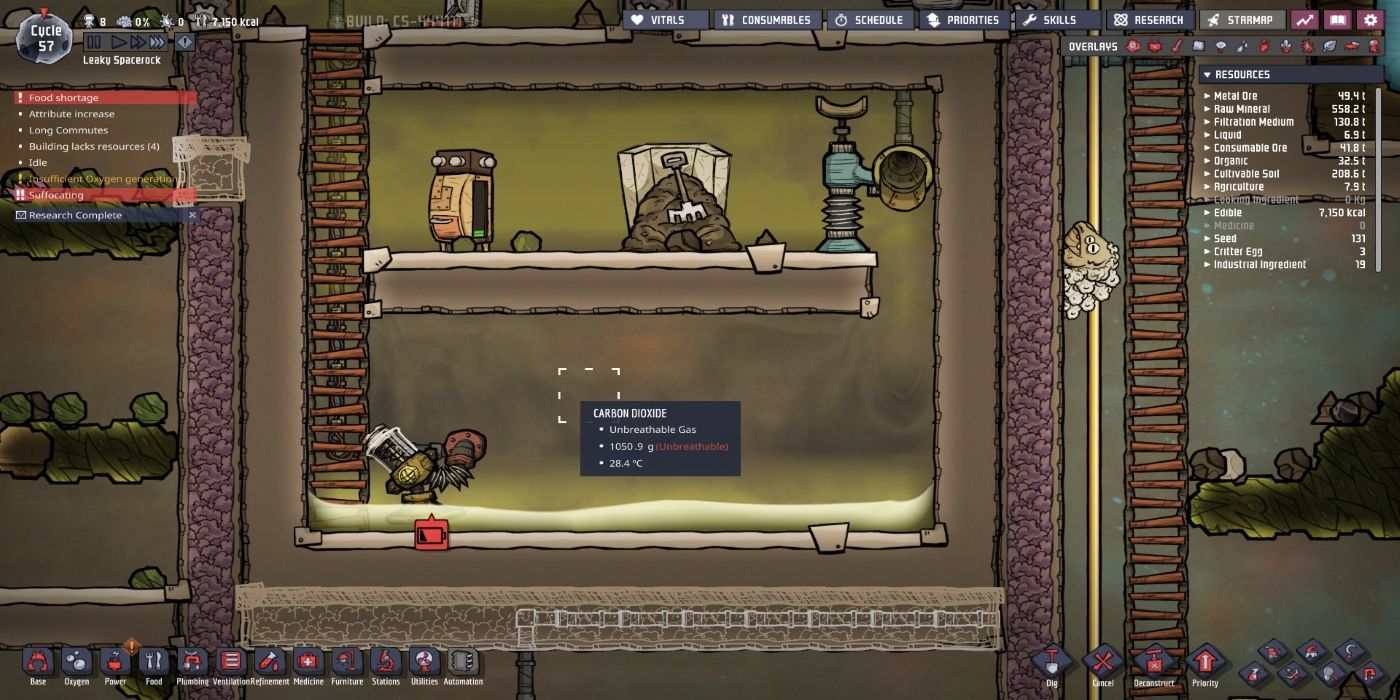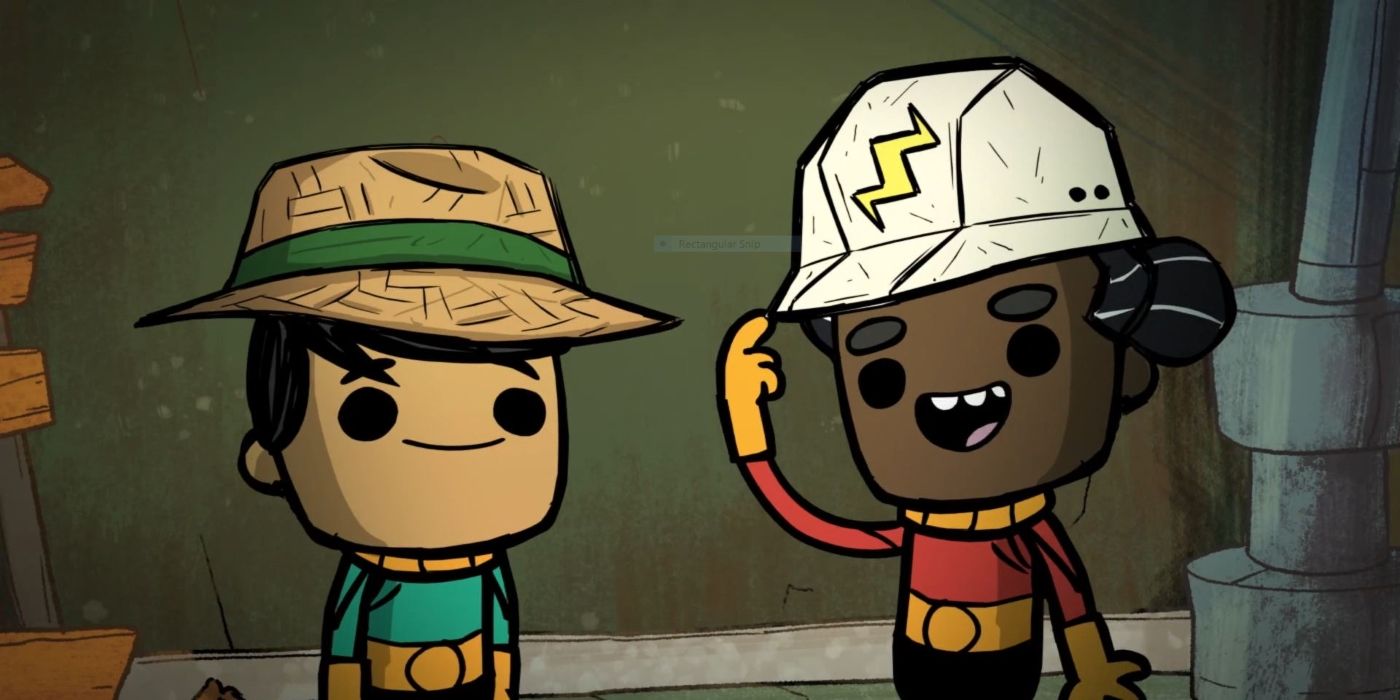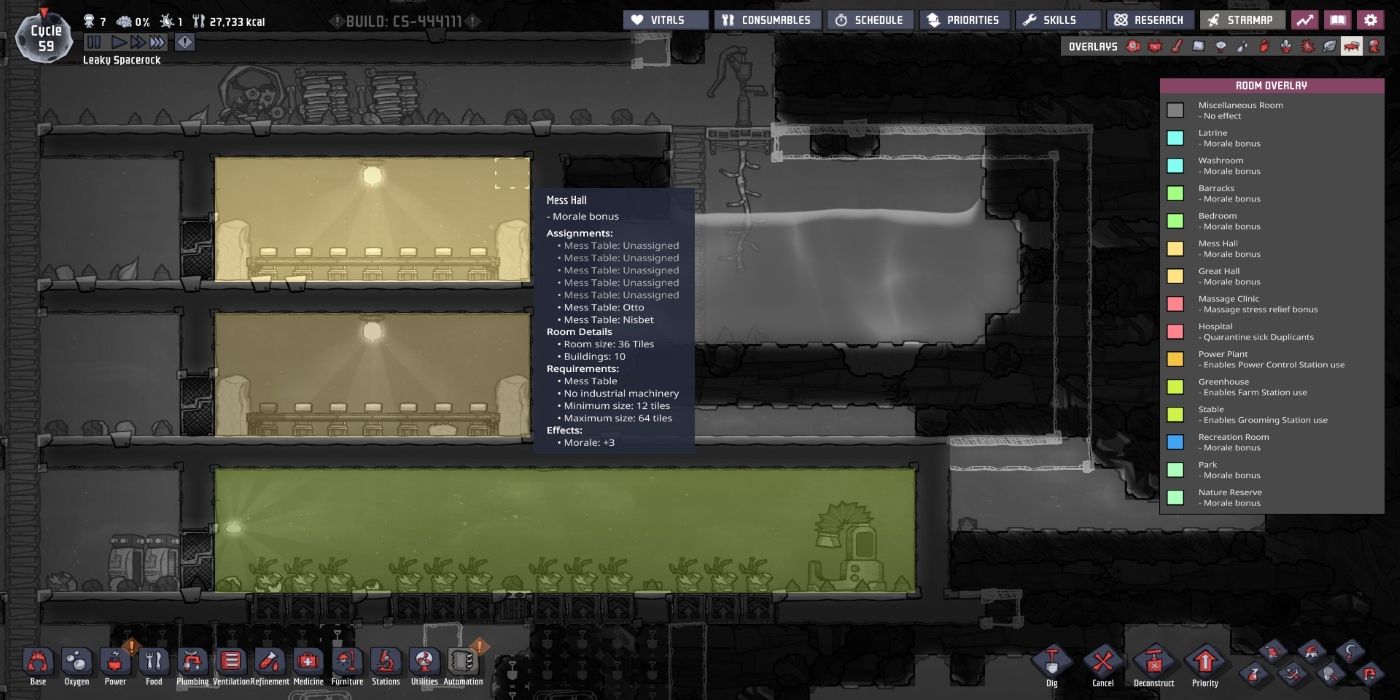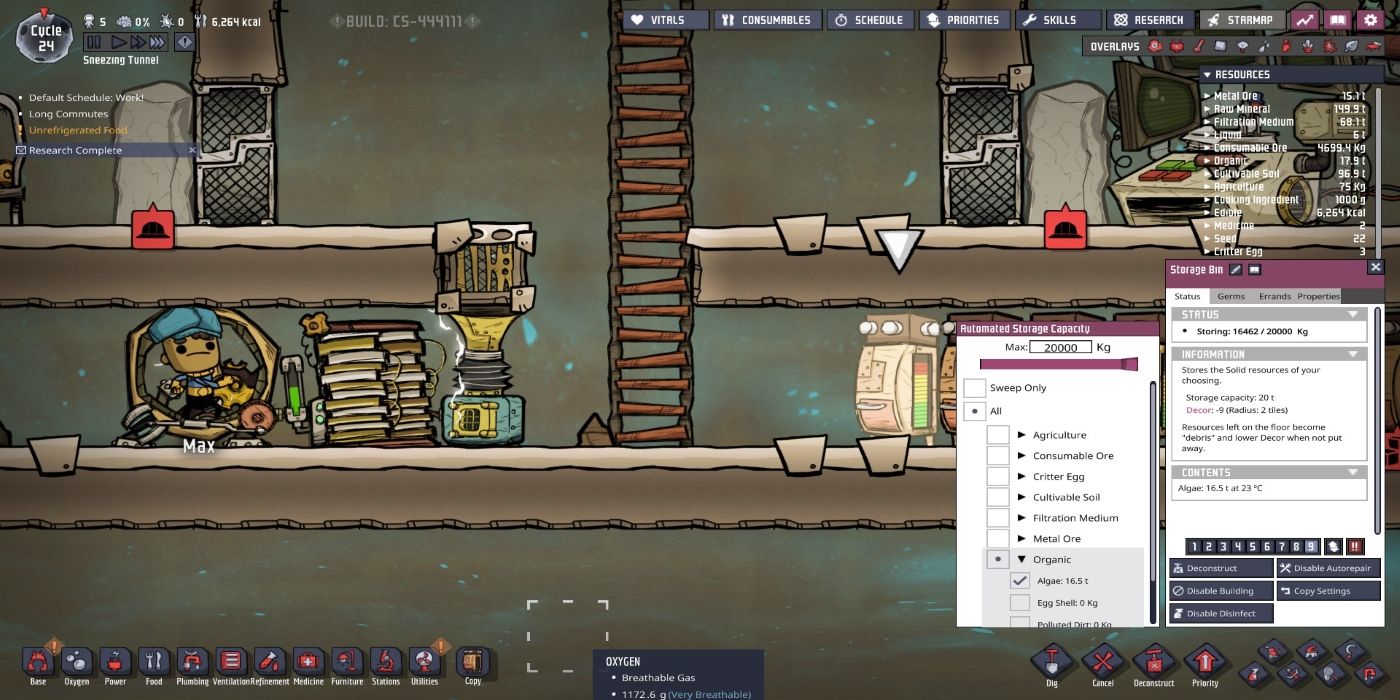Being a space-oriented city builder, Oxygen Not Included will have the player manage a group of duplicants as they try to survive in an unknown underground location. These duplicants will have to perform various tasks that range from digging to oxygen production just to live another day and hopefully make it off the planet.
The base game has several research trees, interconnecting features, and building types. With advanced players having the juggle things like polluted water purification, overheating temperatures, carbon dioxide filtration, and so on; new players can easily get overwhelmed. So below are a few tips and tricks to get started.
The First Things to Do in Oxygen Not Included
All players start out by being teleported deep inside of a large asteroid. New players may notice the overlay options, material data, and logistics they may be able to interact with. But don’t pay attention to any of that. Instead, locate the nearest body of water and begin digging towards it. When that water is accessed, build a water pump to collect it. Water is arguably one of the most important resources in the game, and players will need to begin collecting it as quickly as possible. While the uses of water expands later on, beginner players will primarily want water to farm plants and complete advanced research.
Immediately after reaching water, begin construction of an outhouse or a restroom area. Duplicants need a place to relieve themselves, and if the player does not create a place to do that within the first few days then odds are good that the duplicants will wet themselves. This can cause the colony to get additional bacteria, encourage hypothermia, and waste time by requiring duplicants to mop up their own waste. So just prepare a restroom area ahead of time. If players want to move it later on then they can by destroying the buildings and reconstructing them in a new location.
Sanitation in Oxygen Not Included
Speaking of bacteria, sanitation is really important in this game. If the colony develops too much bacteria, it can cause duplicants to contract diseases like slimelung or food poisoning, which come with their own variety of debuffs.
To prevent this, players need to place specific medicine buildings, like the washbasin and sink, throughout the colony. In the most ideal situations, these buildings will be placed right before major germ centers like restrooms, polluted water dumps, and food preparation areas. If the player needs an idea on where germs are located in the colony, then select the germ overlay near the top right of the screen.
Of special note is the swamp biome. Filled with slime, algae, and gold amalgam; the swamp biome is one of the most unhygienic places in the game. But more importantly, it hosts the highly-infectious slimelung germ, which can quickly spread through the colony and decrease its productivity. Always be cautious when building near the swamp biome, and always be sure to place several sanitation measures for any duplicant who may approach it. That means building several medicine buildings near it and using manual airlocks to prevent the distribution of polluted air. In fact, it is advised to avoid the biome entirely if possible until the colony discovers exosuits.
It should also be noted that water—even clear water—can also harbor germs. If water becomes exceptionally contaminated, it usually has to be purified by boiling. This is done by exposing water to extremely high temperatures by either placing it in extremely heated biomes or intentionally heating the water with machinery. But since boiling isn’t really feasible for beginner players, it is best to just prevent contamination whenever possible.
Manage and Specialize Duplicants in Oxygen Not Included
An important thing to realize about duplicants is that despite their wants and abilities, they can still be pretty stupid. If they trap themselves in a small area with no air, they will not move or dig themselves out unless explicitly told to do so by the player. They will literally stand there, run out of air, and die. So keep an eye out for that while expanding the base, and don’t be afraid to bring other duplicants in to help them. The game will even give the player a notification if a duplicant gets themselves entombed or begins suffocating.
Another thing players want to keep in mind about duplicants is that they can be specialized. As the colony begins expanding and the task list gets bigger, it will become apparent that things would run a lot smoother if the player can assign specific tasks to specific duplicants. Otherwise, why give them their own job preferences? Head over to the top right of the screen and click “Priorities”. This nifty little tool will let the player dictate what jobs duplicants will prioritize, allowing the player to gear the duplicant toward completing their preferred tasks. If the colony is in a stable state, players will want to prioritize tasks based on the duplicant’s preference or skill set to encourage productivity.
Organize Materials and Specialize Rooms in Oxygen Not Included
With optimization and morale being such a huge part of the game, it is advised that players begin organizing their colony early. Have a general plan for where duplicants sleep, eat, bathe, etc. Don’t squash all of the buildings together in the same room either, try making separate rooms for separate purposes. Why? Because each room that fulfills certain criteria gains a bonus. Some of these bonuses can include increased plant growth, a morale boost, or an increase in stress recovery.
Also be sure to make ample use of storage bins. Any material left on the ground is classified as debris, and this debris can reduce the décor value of any given room. Storage bins can help minimize this décor penalty, and each storage bin can be personalized to allow or disallow certain materials. That way players can have designate storage bins for certain materials like algae or sand.
With his in mind, it is advised for players to take some time placing personalized storage bins near machinery that will use the said material. As an example, if the player has a power plant full of coal generators, then they can place a storage bin filled with coal very close by so resupplying the generators can be done quickly.
Carefully Ration Water and Algae Usage in Oxygen Not Included
Two of the more finite materials in the game are algae and water. At the beginning of the game especially, there is no way to generate more of these two important components. So it is advised that beginner players do their best to make their starting supply of water and algae last for as long as possible. Otherwise, the colony will be put in a tight spot as important life support machines like oxygen diffusers begin to fail due to a lack of material.
For the most part, this means players will want to avoid relying on mushbars as a food source since its creation requires so much water. Try to avoid using algae terrariums too since they require a constant supply of both water and algae. Players are also advised to immediately store algae in a storage bin if there are hatches nearby since they often consume algae.
Just try to carefully ration water and algae use until algae distillers and a frozen biome are discovered. At that point making algae and water will be made relatively easy.
Oxygen Not Included is available on Microsoft PCs, Linux, and Mac OS

